You’re eager to start stargazing, but the night sky can be overwhelming. Without the proper knowledge, you might feel lost among the stars.
The sky’s vastness and the Earth’s rotation bring a dynamic canvas of stars and constellations. Knowing where and when to look is critical, but it’s not always clear.
In this article, I’ll help you navigate the celestial sphere. You’ll learn how to identify constellations, understand moon phases, find the best conditions for stargazing, and know the best time to see stars.
Let’s make your night sky exploration enjoyable and rewarding.
Key Things to Know:
- The best stargazing times are during new moons and away from city lights.
- Different seasons offer unique celestial views; use a star wheel to identify them.
- Optimize night vision by avoiding bright lights before observing.
- Use a tripod for astrophotography to capture stunning night skies.
Recommended For You
Understanding the Night Sky
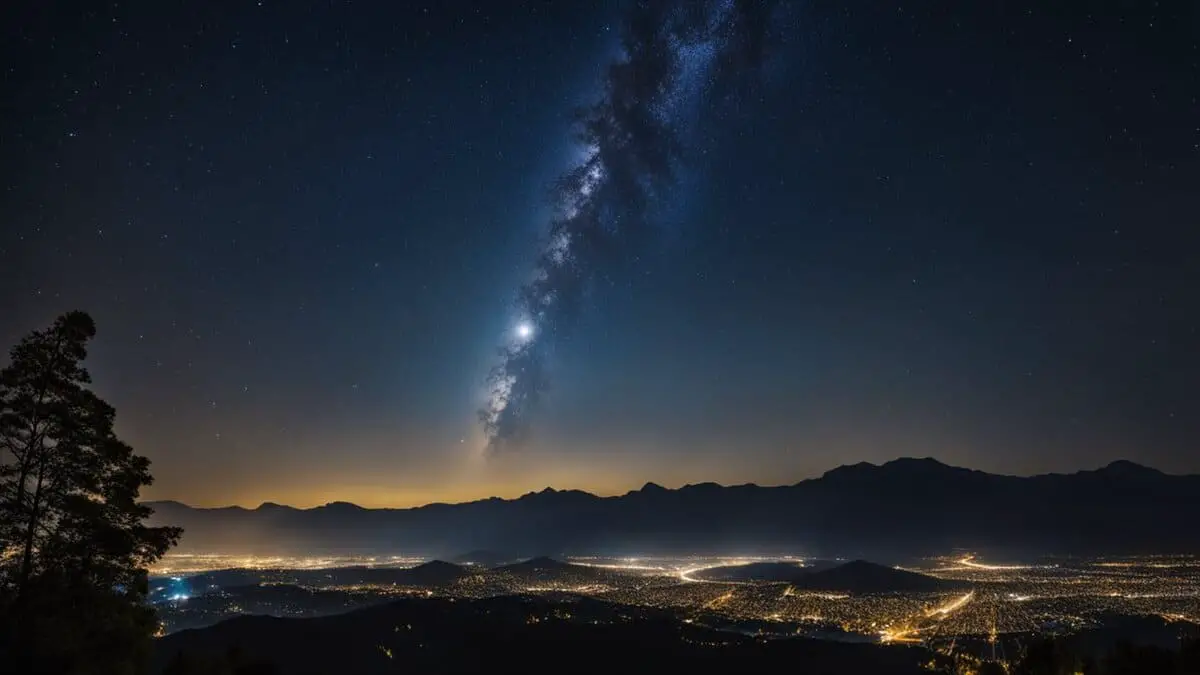
Astronomy Basics
To make the most of your stargazing experience, I found it essential to understand the basics of the night sky.
The Earth rotates on its axis, causing different stars and constellations to appear at various times throughout the night. Not every star is visible from every location on Earth, so knowing your latitude can help you determine which constellations you can see.
Here are some tips to get started:
- Familiarize yourself with the constellations and names of the stars using a star wheel.
- When I choose a night for stargazing, I always look for clear skies and minimal light pollution.
- I prefer to sit back or lie down to minimize neck strain when observing the night sky.
Moon Phases and Their Impact
The Moon significantly impacts the visibility of stars in the night sky. When the Moon is full, its brightness can make observing fainter stars and constellations challenging. The best time to stargaze is during the two weeks before and after the new moon phase when the Moon’s brightness is at its minimum.
Keep track of the Moon phases to plan your stargazing sessions:
- New Moon: The moon is not visible in the night sky
- First Quarter: the right half of the Moon is visible
- Full Moon: the fully illuminated Moon dominates the night sky
- Third Quarter: the left half of the Moon is visible
Planetary Alignments
At certain times, planets in our solar system align and are visible in the night sky. Observing planets like Jupiter, Saturn, Venus, and Mars adds excitement to your stargazing experience.
Remember, practice makes perfect. As you spend more time observing the night sky, you’ll become more familiar with the stars, constellations, and planets, making your stargazing experience even more enjoyable.
Best Viewing Conditions

Identifying Dark Skies
Finding dark skies is essential to achieving the best viewing conditions for star gazing. Dark skies are areas with minimal light pollution, where the natural brightness of the stars can be seen more clearly.
Some factors to consider when identifying dark skies include:
- Distance from urban areas: The farther you are from city lights, the better your view of the night sky will be.
- Meteor showers: During a meteor shower, the increase in shooting stars can make viewing even more spectacular in dark sky locations.
- Moon phase: Aim to stargaze during a new moon or when the moon is in a crescent phase, as these times provide the darkest skies.
Weather Considerations
Weather plays a significant role in the quality of your stargazing experience.
To make sure you have the best conditions, consider the following factors:
- Cloud cover: Look for nights with minimal cloud cover for an unobstructed sky view.
- Seeing conditions: Clear Sky Charts can help you find days with good seeing conditions, influencing the clarity and steadiness of the celestial objects viewed.
Light Pollution Effects
Light pollution dramatically affects the brightness and visibility of stars in the night sky.
To minimize its impact, follow these tips:
- Choose darker locations: Scout for spots with the least artificial light, such as parks or nature reserves.
- Limit personal light: Use red-filtered flashlights or headlamps to preserve your night vision and minimize the impact of your own light on the surrounding environment.
- Educate others: Share your knowledge about the importance of dark skies and the effects of light pollution to encourage better lighting practices in your community.
By considering dark skies, weather, and light pollution, you’ll improve your chances of experiencing the most awe-inspiring views of the stars.
Stargazing Calendar: Best Time To See Stars

Major Meteor Showers
Throughout the year, there are several major meteor showers that you can enjoy.
Mark your calendar for these exciting celestial events:
- Quadrantids: Peaks around January 3-4
- Lyrids: Peaks around April 22
- Eta Aquarids: Peaks around May 6
- Perseid Meteor Shower: Peaks around August 12-13
- Draconids: Peaks around October 8
- Orionids: Peaks around October 21
- Leonids: Peaks around November 17-18
- Geminid Meteor Shower: Peaks around December 14
- Ursids: Peaks around December 22-23
Make sure to find a dark location, away from city lights, for the best viewing experience.
Notable Astronomical Events
Apart from meteor showers, other notable astronomical events are worth adding to your stargazing calendar.
Some examples include:
- Total Solar Eclipse: An incredible event where the Moon completely covers the Sun, resulting in a few minutes of darkness during the day. The last total solar eclipse visible from North America occurred on April 8, 2025.
- Green Comet Closest to Earth: In early February 2023, comet C/2022 E3 (ZTF), also known as the Green Comet, made its closest approach to Earth, about 27 million miles away.
Knowing the dates of these celestial events can help you plan your stargazing adventures. Check weather conditions for optimal viewing opportunities.
Ideal Times of the Year
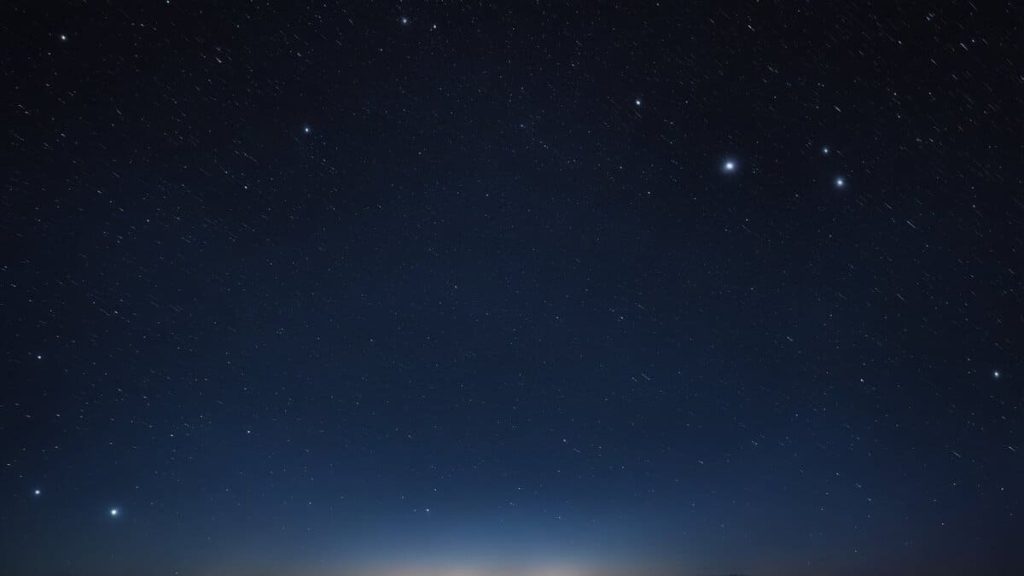
Equinoxes and Solstices
During the year, four significant events in the Earth’s orbit affect the night sky: the March equinox, June solstice, September equinox, and December solstice. The equinoxes and solstices are ideal times to go stargazing, as they often present clearer skies and longer nights, depending on your location.
- March equinox (around March 20): The day and night are of equal length during this time, and it marks the beginning of spring in the Northern Hemisphere and autumn in the Southern Hemisphere.
- June solstice (around June 21): The summer solstice is when the days are the longest and nights are the shortest in the Northern Hemisphere. It marks the beginning of summer up north and winter down south.
- September equinox (around September 22): Like the March equinox, day and night are equal on this date, which marks the start of autumn in the Northern Hemisphere and spring in the Southern Hemisphere.
- December solstice (around December 21): Known as the winter solstice, this is when the nights are longest and days are shortest in the Northern Hemisphere, signaling the start of winter up north and summer down south.
Seasonal Viewing Differences
Each season offers different stargazing opportunities due to the varying positions of celestial objects in the night sky.
Here are some highlights for each season:
- Spring (Northern Hemisphere) / Autumn (Southern Hemisphere): The best time to spot the galaxy’s core, including the Milky Way, is during this period.
- Summer (Northern Hemisphere) / Winter (Southern Hemisphere): This season is perfect for viewing meteor showers, such as the famous Perseids, which peak in August.
- Autumn (Northern Hemisphere) / Spring (Southern Hemisphere): Clear skies and less light pollution make this an ideal time to observe distant galaxies and nebulae.
- Winter (Northern Hemisphere) / Summer (Southern Hemisphere): Crisp, cold nights offer excellent opportunities to view bright planets, such as Jupiter and Saturn, and constellations like Orion.
The best time to stargaze in all seasons is during the new moon when the sky is the darkest. The absence of moonlight allows you to observe fainter stars and other celestial objects more easily.
Remember to dress appropriately and bring a warm blanket, binoculars, or a telescope to enhance your stargazing experience!
Stargazing Techniques
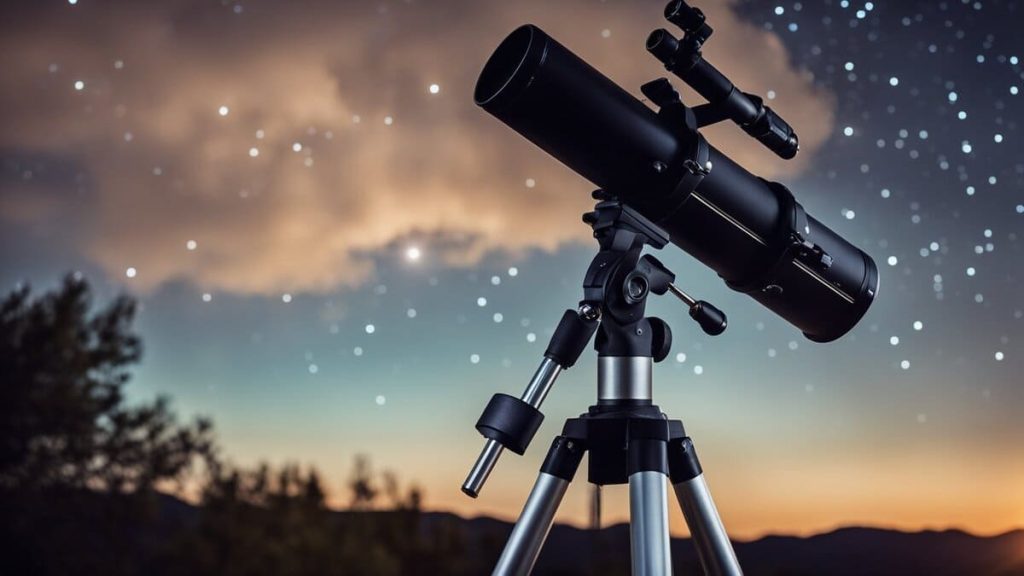
Optimizing Night Vision
Optimizing your night vision is essential to enhance your stargazing experience. It usually takes 20 to 30 minutes for your eyes to fully adapt to the dark.
Consider these tips to help you make the most of your observing time:
- Avoid bright lights before and during stargazing. If you need light, use a dim red light, as it has the least impact on your night vision.
- Allow time for your eyes to adapt to the darkness. Be patient!
- Keep yourself hydrated and avoid consuming caffeine or alcohol before stargazing, as these can negatively affect your night vision.
Photography Tips
Capturing the beauty of the night sky can be an enjoyable and rewarding experience.
By following these photography tips, you’ll achieve fantastic results:
- I always use a tripod to stabilize my camera and avoid blurry shots.
- Start with a wide-angle lens to capture more of the sky.
- Experiment with your camera settings. A good starting point is a wide aperture (f/2.8 or lower), a high ISO (1600+), and a long exposure time (10-30 seconds).
- Take multiple shots and use image stacking software like DeepSkyStacker to improve the final image’s quality.
Choosing Observation Equipment
I’ve learned that the right equipment can significantly enhance your stargazing experience.
Here are some recommendations:
- Binoculars: For beginners, 7×50 or 10×50 binoculars are easy to use, portable, and will reveal many celestial objects.
- Telescopes: A small refractor or Dobsonian telescope is an excellent choice for beginners. These telescopes deliver bright, sharp images of the moon, planets, and deep-sky objects.
- Apps and Star Charts: A stargazing app or a printed star chart can help you find and identify celestial objects more easily.
With these techniques and recommendations, you’ll be well on your way to enjoying the wonders of the night sky.
FREE STARGAZING CHECKLIST
My 5-page Stargazing Checklist will enhance your astronomical observations.
Follow this free checklist to navigate the night sky with confidence, clarity, and a sense of preparedness for a rewarding stargazing experience.

Special Celestial Events

Eclipses and Transits
Eclipses are fascinating phenomena that occur when the moon or Earth passes through the shadow of the other celestial body. There are two main types of eclipses: solar and lunar.
Transits happen when a smaller celestial body, like a planet or moon, passes in front of a larger one. For example, a transit of Venus occurs when Venus passes between Earth and the Sun. To catch these events, watch astronomy calendars to know when they’re happening.
Remember these essential tips when observing eclipses and transits:
- Always use proper solar filters or safety glasses when viewing a solar eclipse or transit.
- Lunar eclipses are safe to watch with the naked eye or binoculars, but ensure you’re in a dark area with a clear view of the moon.
Watching Supermoons
A supermoon occurs when a full moon or new moon coincides with the moon’s closest approach to Earth, known as perigee. During a supermoon, the moon appears larger and brighter than usual.
Some notable supermoon names include:
- Wolf Moon (January)
- Cold Moon (December)
- Worm Moon (March)
- Pink Moon (April)
- Flower Moon (May)
- Strawberry Moon (June)
- Buck Moon (July)
To make the most of my supermoon experiences, I always find a dark location with a clear view of the horizon. I use a moon phase calendar to track the dates of upcoming supermoons.
Global Astronomy Month
Global Astronomy Month, held annually in April, is a month-long celebration of astronomy organized by Astronomers Without Borders. During this event, I often participate in various online and local activities to learn more about astronomy and connect with fellow stargazers.
Here are some ways to enjoy Global Astronomy Month:
- Join online webinars and presentations on various astronomy topics.
- Participate in local star parties or astronomy events in your area.
- Use this month as motivation to learn more about the moon phases, like waxing, waning, and crescent moons.
Astrophotography
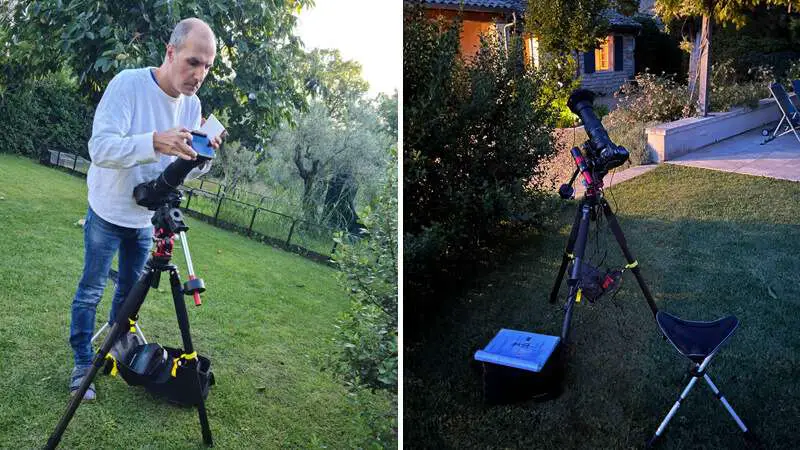
Astrophotography is a fascinating hobby that allows you to capture stunning night sky images. In this section, I’ll cover some essential tips and techniques for capturing the Milky Way, long exposures, and post-processing best practices.
Capturing the Milky Way
To capture the beauty of the Milky Way, you need to find a location with dark skies, high altitude, and minimal light pollution.
Follow these simple steps:
- Choose the right equipment: A DSLR or mirrorless camera with a wide-angle lens is ideal for capturing the vastness of the Milky Way. Remember to use a sturdy tripod to keep your camera stable.
- Take advantage of the right time: The best time for astrophotography is during the astronomical twilight when the sky is darkest and celestial objects are more visible.
- Compose your shot: Include interesting landscape elements in your frame to create a compelling composition.
Long Exposure Techniques
Long exposures are essential for capturing the faint light emitted by stars and other celestial objects.
Keep these tips in mind to ensure excellent results:
- Stay stable: Use a sturdy tripod and a remote shutter release to minimize camera movement during the exposure.
- Use manual settings to manually control your ISO, aperture, and shutter speed to capture the best possible image.
- Avoid star trails: To prevent star trails, follow the 500 rule: 500 / (sensor crop factor x focal length of the lens) = maximum shutter speed.
Post-Processing Best Practices
Post-processing is an essential step in creating stunning astrophotography images.
Here are some suggestions to improve your photos:
- Shoot in RAW format: RAW files contain more data, allowing for more flexibility during post-processing.
- Adjust white balance: Use photo editing software to correct for color cast and adjust the white balance of your image.
- Enhance contrast: Increase contrast to bring out the faint details in the Milky Way while maintaining the balance with the landscape.
- Remove noise: Use noise reduction tools to remove digital noise caused by high ISO settings.
Remember, practice makes perfect, and with time and dedication, your astrophotography skills will improve, allowing you to capture the beauty of the night sky.
Practical Considerations for Star Observers
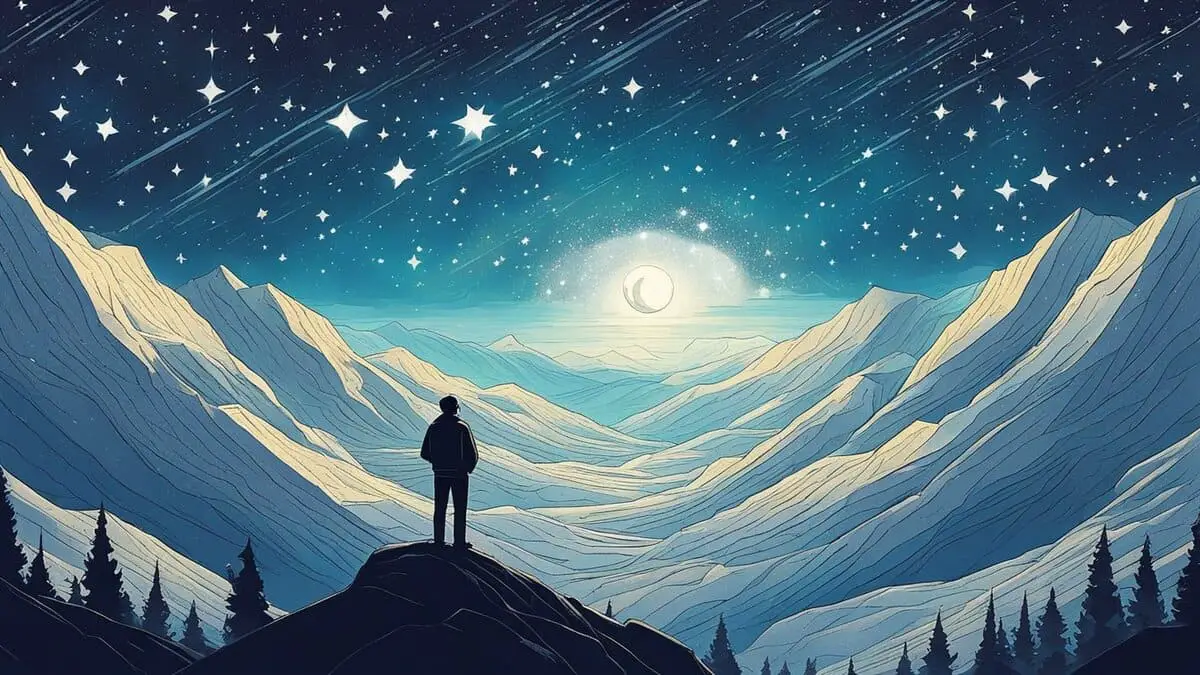
Preparing for Star Gazing
When planning to observe stars, choosing a dark sky location, far from urban light pollution, is essential. You can find these spots using dark sky maps, where less populated areas often offer the best views.
To enjoy an optimal star-gazing experience, consider the following equipment:
- A telescope or binoculars for increased visibility
- A red flashlight to help you navigate without disrupting your night vision
- Warm clothing to stay comfortable in lower nighttime temperatures
- A stargazing app to identify celestial objects in real time
In my experience, paying attention to weather conditions such as wind, storms, and cloud cover is crucial.
Overnight Camping and Safety
Remember to prioritize your safety and well-being if you plan to stay overnight for your star-gazing adventure.
Make sure to pack the following items for a worry-free experience:
- A tent or shelter for protection from the elements
- Appropriate clothing layers for temperature fluctuations
- Sufficient water and provisions for the duration of your stay
- A first-aid kit for emergencies
- Navigation tools, such as a map and compass
Additionally, alert someone of your plans and location in case of any unpredicted situations. By adequately preparing and prioritizing your safety, you can ensure a memorable and enjoyable star-gazing experience under the open sky.
Frequently Asked Questions
How can I distinguish between planets and stars in the night sky?
To differentiate between planets and stars, look for objects that shine steadily and brightly without twinkling. Planets generally appear brighter and do not twinkle like stars due to their closer proximity to Earth.
What are some common mistakes to avoid while stargazing?
Common stargazing mistakes include:
- Not allowing enough time for your eyes to adjust to the dark.
- Use bright white lights instead of red lights.
- Not checking weather and astronomical conditions beforehand.
Avoiding these can significantly enhance your stargazing experience.
Is there a best time of night to observe specific celestial objects?
The best time of night to observe specific celestial objects varies. Generally, planets are best seen in the early evening. At the same time, deep-sky objects like galaxies and nebulae are more visible late at night when the sky is darkest.
TL;DR
- Optimal stargazing times are during new moons and in dark, rural areas away from light pollution.
- Familiarize yourself with celestial bodies and constellations using a star wheel and stargazing apps.
- Prepare for varying weather conditions and use the right equipment for enhanced visibility, like binoculars or telescopes.
- Use astrophotography techniques, such as a tripod and manual camera settings, to capture stunning night sky images.
- Participate in astronomical events and understand the impact of seasons and moon phases on your stargazing experience.
If you have any questions or insights about stargazing, the night sky, or astrophotography, I’m here to share my experiences and learn from yours. Feel free to drop your thoughts or queries in the comments section below – let’s explore the universe together!




